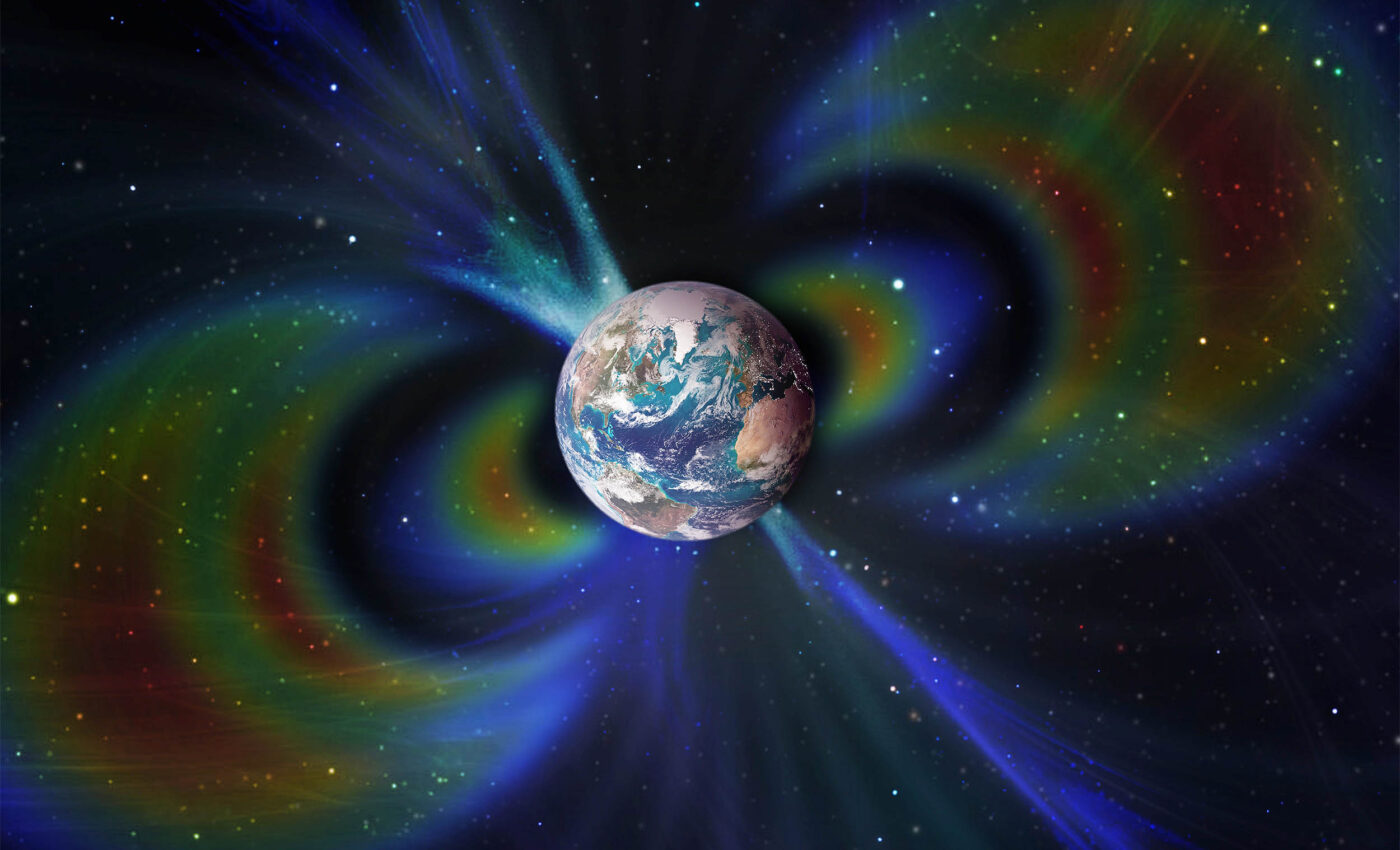
Earth’s magnetic field is much older than previously believed
Geologists have uncovered ancient rocks in Greenland that bear the oldest remnants of Earth’s early magnetic field. These exceptionally pristine rocks, preserved for billions of years, provide a glimpse into the planet’s early conditions that may have helped life take hold.
Extending the age of Earth’s magnetic field
Claire Nichols, a former MIT postdoc and now an associate professor of the geology of planetary processes at Oxford University, along with her colleagues, determined that the rocks are about 3.7 billion years old.
More importantly, they retain signatures of a magnetic field with a strength of at least 15 microtesla, similar in magnitude to the Earth’s magnetic field today.
The findings, appearing in the Journal of Geophysical Research, potentially extend the age of the Earth’s magnetic field by hundreds of millions of years.
“The magnetic field is, in theory, one of the reasons we think Earth is really unique as a habitable planet,” says Nichols. “It’s thought our magnetic field protects us from harmful radiation from space, and also helps us to have oceans and atmospheres that can be stable for long periods of time.”
Implications for life’s emergence
The discovery of a magnetic field dating back to 3.7 billion years ago has significant implications for the emergence of life on Earth.
“That’s important because that’s the time when we think life was emerging,” says Benjamin Weiss, the Robert R. Shrock Professor of Planetary Sciences in MIT’s Department of Earth, Atmospheric and Planetary Sciences (EAPS).
“If the Earth’s magnetic field was around a few hundred million years earlier, it could have played a critical role in making the planet habitable,” Weiss continued.
Exploring the Isua Supracrustal Belt
In 2018, Nichols and her team embarked on an expedition to the Isua Supracrustal Belt in southwest Greenland, a remote location accessible only by helicopter.
The area is known for having the oldest preserved rocks on Earth, which have been extensively studied to answer scientific questions about Earth’s ancient conditions.
“It’s about 150 kilometers away from the capital city, and you get helicoptered in, right up against the ice sheet,” Nichols says. “Here, you have the world’s oldest rocks essentially, surrounded by this dramatic expression of the ice age. It’s a really spectacular place.”
Analyzing banded iron formations
The team collected samples of banded iron formations, rocks that appear as stripes of iron-rich and silica-rich rock. The iron-oxide minerals found in these rocks can act as tiny magnets that orient with any external magnetic field.
The researchers suspect that these rocks were originally formed in primordial oceans prior to the rise in atmospheric oxygen around 2.5 billion years ago.
“Back when there wasn’t oxygen in the atmosphere, iron didn’t oxidize so easily, so it was in solution in the oceans until it reached a critical concentration, when it precipitated out,” Nichols explains. “So, it’s basically a result of iron raining out of the oceans and depositing on the seafloor.”
Determining the strength of the ancient magnetic field
Through a careful process of remagnetization, the team concluded that the rocks likely harbored an ancient, 3.7-billion-year-old magnetic field, with a magnitude of at least 15 microtesla, half the strength of today’s field but of the same order of magnitude.
“The fact that it’s similar in strength as today’s field implies whatever is driving Earth’s magnetic field has not changed massively in power over billions of years,” Nichols says.
Implications for Earth’s evolution and habitability
The results raise questions about how the ancient Earth could have powered such a robust magnetic field, as it’s thought that the inner core, which powers today’s field, had not yet formed so early in the planet’s evolution.
“It seems like evidence for whatever was generating a magnetic field back then was a different power source from what we have today,” Weiss says.
“And we care about Earth because there’s life here, but it’s also a touchstone for understanding other terrestrial planets. It suggests planets throughout the galaxy probably have lots of ways of powering a magnetic field, which is important for the question of habitability elsewhere,” he concluded.
New chapter in the history of Earth’s magnetic field
In summary, the discovery of 3.7 billion-year-old rocks in Greenland bearing signatures of Earth’s ancient magnetic field opens a new chapter in our understanding of the planet’s evolution and habitability.
This find challenges our current knowledge of Earth’s magnetic field and its role in supporting life. As geologists continue to unravel the secrets hidden within these ancient rocks, we move closer to comprehending the complex interplay between Earth’s magnetic field, its early conditions, and the emergence of life on our planet.
This research reshapes our understanding of Earth’s history and provides valuable insights into the potential habitability of other terrestrial planets throughout the galaxy.
The full study was published in the Journal of Geophysical Research Solid Earth.
—–
Like what you read? Subscribe to our newsletter for engaging articles, exclusive content, and the latest updates.
Check us out on EarthSnap, a free app brought to you by Eric Ralls and Earth.com.
—–













